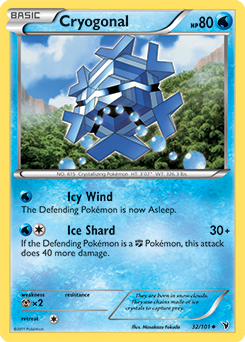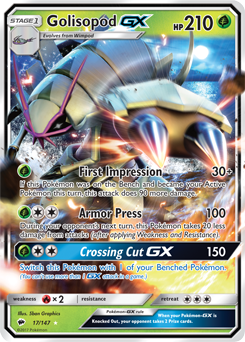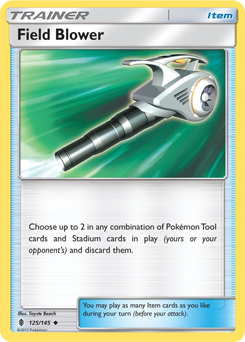“Zoronto” — An In-Depth Look at Zoroark-GX / Golisopod-GX

Editor’s note:
This article was written before Toronto Regionals. Due to unforeseen circumstances, we weren’t able to publish it until now. Since some of the info is out of date, we have decided to publish it as a free premium article. It still contains some valuable insight into Zoroark-GX / Golisopod-GX and metagaming, so please enjoy!
Good afternoon PokeBeachers! With the open space and clean air, nothing beats a Canadian spring (especially after all the Cryogonals leave my driveway). Recently, I haven’t been able to play too rigorously this season due to my surplus of assignments with my final semester of school. One graduation certificate and $50 later, I’m officially ready to rock ‘n’ roll at the Toronto Regional Championships.
Toronto Talk
This tournament has a few notable features that are unique to it this year:
There’s a player cap that’s smaller than other Regionals, which translates to a slight concentration in stronger players. That means that since there’s a cap on players allowed to compete at the Toronto Regional Championships, the upper tier of players who need Championship Points in order to succeed will register first. The same rule of thumb also goes for those who need Championship Points to pick up their invite — they’ll have more incentive to register early and ensure their registration in the event.
Since Toronto is a Canadian event, players who are travelling abroad also require passports. Ah, the good ‘ol border, preventing our American pals from stealing all of our Championship Points and Tim Hortons (back off of my Timbits)! In all seriousness, most competitive players have their passports in order to pursue higher numbers of Championship Points. Many casual players will sit out Toronto because of their lack of passport or other international restrictions, whereas the more competitive players will go to greater lengths to attend.
At Toronto, you can expect a linear metagame forecast, and expect less rogue decks being piloted at this event.
Meta Forecast
As I’ve previously stated, there’s going to be fewer rogue decks at this tournament due to the aforementioned factors. I expect to see the following decks:

Suspect A: Buzzwole-GX / Lycanroc-GX (BuzzRoc)
Deemed as the “King of Standard”, Buzzwole-GX has been dominating at events lately due to its sheer speed and ability to run hot. If you’re able to flood your field with Energy, there’s absolutely no stopping this deck and its strong attacks. At times, BuzzRoc can be clunky due to playing multiple Stage 1 lines (Octillery and Lycanroc-GX), while at other times it seems like a well-oiled machine. Regardless, this deck has enough muscle to beast through any amount of HP, and has great typing to take down the likes of any Zorua.
Suspect B: Espeon-GX / Garbodor (EspyGarb)
Espeon-GX is a deck that came to fruition at Portland Regionals piloted by both Xander Pero and Colter Decker. This deck relies primarilly on four things:
- 1. the opponent playing numerous Item cards to trigger Garbodor’s Trashalanche attack
- 2. the opponent to flip tails on Confusion due to Espeon-GX’s Psybeam
- 3. the opponent to attach Energy to boost our damage output with Psychic
- 4. damage on our Pokemon in order to trigger Drampa-GX’s Berserk or Tauros-GX’s Rage/Mad Bull GX attacks
This deck is especially volatile against decks that rely on Abilities, or that are weak to Psychic types like Lucario-GX or Buzzwole-GX.
Suspect C: Zoroark-GX / Golisopod-GX (ZoroPod)
Zoroark-GX is a deck that was first introduced to us via Tord Reklev at the Europe International Championships this year, where we saw him take home the gold. This deck is no stranger to the spotlight; it’s a highly consistent deck with neutral matchups across the board. Packing a Mew-EX gives it a solid Psychic-type attacker in order to score KOs against any Psychic-weak Pokemon. Oranguru really helps us out in the mirror in order to prevent any possible KO with Parallel City. This is an all-around great deck to pilot if you enjoy grindy games that go down to the wire.
Let’s go more in depth as to what makes ZoroPod a fantastic deck choice for this particular tournament. There are quite a few plays within this deck that players may be unaware of as well as many interesting card inclusions.
This is more of an expansion/review of ZoroPod, as I know many people have written about it, I’m not going to try and reinvent the wheel, but rather throw on some new rims and highlight some forgotten features.
Without further delay, here’s the list I’m looking at currently:
Zoroark-GX / Golisopod-GX Decklist
Matchups
BuzzRoc — 50-50*

The asterisk is due to a sway in the matchup if you manage to use Mew-EX early on in the game.
This matchup is highly based around momentum as the BuzzRoc player is more apt to win when they can keep Energy on the board. The best way to put this beast to rest is to continually score OHKO’s on their Pokemon with Energy. If you can keep the pressure on them, they’ll eventually run out of options to attack with. The key here is that you have to always have the counter-response for their attacker! For example, if they have a fully loaded Buzzwole-GX, you better have a Mew-EX ready to use its Versatile Ability to copy Riotous Beating in order to take the Buff Mosquito Pokemon down. Your Golisopod-GX can OHKO a Lycanroc-GX, their Buzzwole-GX can take down Zorua/Zoroark-GX, and their Mew can take down your Mew-EX — the weaknesses in this deck all feed into each other. Be sure to stay sharp and lay down your high HP attackers (ex. Zoroark-GX and Golisopod-GX) on the field, and your low HP attackers in your hand (ex. Mew-EX). You’ll often find that you use two Puzzle of Time to retrieve back Mew-EX and Double Colorless Energy. Mallow can aid you in getting those Puzzle of Time out of the deck at various points throughout the game.
Overall this matchup is extremely close, but I find that ZoroPod is slightly favoured if able to find Mew-EX early, whereas BuzzRoc can regain the matchup if it can respond back with a Mew and Choice Band to use Jet Punch and OHKO Mew-EX. If all else is going bad in the matchup, feel free to use Counter Catcher on Octillery, and N in order to limit your opponent’s resources.
EspyGarb — 60-40*
The asterisk represents a sway in the matchup if you play any less than three Field Blower. The less Field Blower you play, the worse this matchup becomes because you need to be able to remove the Pokemon Tool off of a Garbodor in order to disable Garbotoxin. If you’re unable to remove the Tool off of Garbodor, then Trade will be offline for the duration of the Tool. If we have consistent access to Trade, then I’m not worried in this matchup. Espeon-GX’s attacks can never OHKO us because 1. we only will ever have 1-3 Energy on an attacker at any given times and 2. Divide GX can only deal 100 damage maximum.
The most stressful times in this matchup is when our opponent uses Psybeam while we’re underneath Garbotoxin. However, if there is no Ability-lock in play, then we can find cards to remove our Confusion in the form of Guzma, Acerola, Float Stone, or manually retreating. Between those options and Puzzle of Time, we’ll rarely run out of ways to relieve Confusion. For that reason, target down the Trubbish in the early game. If you can kill one or two early on, or even take out their Garbodor, then you’ll be in great condition to win this game. One hot pro tip is to use Oranguru to recycle Field Blowers, they’re hardly ever dead in this matchup! This little monkey can almost single-handedly take down this matchup provided you consistently draw into healing cards or Field Blower. You can also remove any Items from the discard pile to render Trashalanche useless.
ZoroPod (Mirror) — 50-50
This is the most skill-intensive mirror in the game, but essentially it’s going to boil down to Oranguru vs. Oranguru. If your opponent is not playing Oranguru, you can easily take control of the game state by recycling resources whereas your opponent cannot. It’s like you have an infinite amount of resources, versus your opponent who has a finite amount (and it’s a fantastic moment when you’re mid-game and realize it). The best way to loop Oranguru is by using the following method:
- Guzma up the opponent’s Golisopod-GX. This keeps them from using First Impression for 120 damage.
- Parallel City the opponent down to three Pokemon on the Bench. If they don’t have Zoroark-GX in play, reduce their damage output by 20 by using the other side of Parallel City.
- Begin to casually stockpile Acerola/Max Potion/Guzma/Puzzle of Time in your hand. Setup 1-2 Zoroark-GX with either a Tapu Koko or a Float Stone on a Benched Pokemon. You’ll need a free retreater for when they KO your Oranguru which will be KO’d 1-3 times, but this doesn’t matter — just keep following the strategy.
- If followed correctly, you’ll be able to limit the Golisopod-GX to only one GX Knock Out on an Oranguru, and from there they won’t be able to KO your Oranguru in a single shot. Zoroark-GX will either be capped at 80 due to Parallel City, or the opponent won’t have enough Pokemon in deck to bench because they’ve burned so many Basics from discarding down to three Pokemon with Parallel City.
- When the opponent attacks your Oranguru now, just heal it and keep using Resource Management until the opponent decks out.
- If they are ever able to KO your Oranguru, use Puzzle of Time to grab back the Oranguru and continue to keep the loop going.
At this point, you’ll be able to deny any KOs on Oranguru and consistently keep recycling any key cards you may need. If the opponent has an Oranguru, you’ll need to isolate it and keep attacking it with Golisopod-GX/Zoroark-GX. They’ll be trying to deck you out as well but in most cases unless either player slips up, it will result in a tie.
Cuttable Cards
Fourth Grass Energy
Right off the hop, this is the first suspect that can leave the deck. The reason behind the use of a fourth Grass Energy is to be able to draw into a copy underneath various Ability-locks (ex. Greninja’s Shadow Stitching or Garbodor’s Garbotoxin) that shut down Zoroark-GX from using Trade. If you only play three copies of Grass Energy, you’ll have a harder time finding these when you need them the most. In this fast-paced format that we currently play in, we can’t afford to miss those turns; this is less of a resource count of cards, and more of a consistency count. You can toy around with three copies, but you’ll find scenarios where missing the Energy is crippling. Over the course of a nine-round tournament, you’ll see how this can add up against you.
Counter Catcher
This Counter Catcher could simply become a fourth copy of Guzma. Counter Catcher is nice because it’s an Item card, and can be used in conjunction with another Supporter you may need to play in the same turn. The downside of it is that you need to be behind in order to use it, however this card is a “tempo piece”–it’ll swing the tempo of the match back into your favor. Let’s say you have a damaged Golisopod-GX in play, and an Acerola in hand. You can play the Acerola, remove the damage from one of your opponent’s attacks, and then follow up with a Counter Catcher on a damaged Benched target in order to even the Prize trade once again. This is one of many scenarios where Counter Catcher is amazing as a utility card!
The main purpose of this card is to isolate draw Pokemon such as Octillery or Oranguru. There will be games where you need to N your opponent’s hand down to a low amount in order to gain a technical advantage, so why not do that by Knocking Out their only draw Pokemon in play? Counter Catcher can help you headhunt their lifeline. Here’s the basic strategy to use Counter Catcher optimally:
- Step 1 — Fall behind in Prize cards
- Step 2 — Play Counter Catcher on target draw Pokemon
- Step 3 — Play N
- Step 4 — Command a natural lead in the game due to your opponent’s low hand size
It’s really that easy sometimes to command a game, but also important to note: if you take out a draw Pokemon, that means you didn’t swing at their main attacker that turn. You’ll need to find healing cards like Acerola/Max Potion in order to deny KOs for a turn or so, but provided they don’t draw out of their low hand size, your opponent should be stranded with limited options for the remainder of the game.
Third Field Blower

Field Blower is a card I often toss away with a Trade Ability, or used as Ultra Ball fodder because our opponent is using a deck that has a low amount of Stadium/Pokemon Tools. Considering we’re Knocking Out Pokemon left and right throughout the game, and replacing our opponent’s Stadium with our own Stadium, Field Blower isn’t necessary at all times. However, any player that’s played against Garbodor knows how pesky Garbotoxin can be once it’s established. It’s difficult because you can’t always just Guzma up the Garbodor and knock it out when there’s an imminent threat in the Active position — that’s where our excessive amount of Field Blower come into play. Removing a Pokemon Tool from Garbodor is vital at times in order to get Trade back online, as well as any other useful Abilities such as Tapu Lele-GX Wonder Tag or Mew-EX Versatile.
Another scenario where our third Field Blower can come in handy is when you’re playing against opposing Zoroark-GX decks — many of them play their own copies of Parallel City, while Parallel City is our only Stadium as well. If no players had Field Blower, the player who first played down their own Parallel City would keep it locked in for the rest of the game. Competitively, I can’t bank on a 50% chance with tons of deviance in between, so I prefer to include the third Field Blower for a couple of reasons:
- To remove the Stadium’s negative effect — depending on how crafty your opponent is, they may decide to limit our Bench to three, or reduce your Golisopod-GX damage output by 20. Either side can be detrimental to your success within the game, and require Field Blower to remove the harsh effects Parallel City can cast. Keep in mind, you can also remove your own Parallel City from play, just in case you need a couple of extra Bench slots or a little extra damage back online.
- To be able to play your own Stadium: you want to be able to control the way Parallel City is facing, so you’d do that by playing your own. Take control of the situation by playing the third Field Blower so you can play Parallel City down at any time.
Ultimately, this card is cuttable though because you don’t need it to function within the deck, and you can always grab back a spare Field Blower with Puzzle of Time.
Home Field
I’m very excited to be playing in my first Regional Championships since Dallas. It isn’t the gap I necessarily wanted, but sometimes as players it’s important to take a break from the game. This can help to develop clearer thoughts, come out with creative concepts, and sometimes find out new things about yourself as a person. I often find that if I play manically, I lose insights into the game because I overthink the board state a lot — by consistently taking small breaks, I’m able to maintain strong finishes because I continue to practice locally, while also still participating in other things I love.
On the flipside, I’ve missed Pokemon, and I’ve really enjoyed playing recently — I’ve even gotten my girlfriend to play a game or two! This tournament is basically in my backyard, so it’s nice to have my friends from all over the globe come to hang out with me in a place where I’m proud to call home. Come on out to the Toronto Regional Championships and get a poutine with me; I promise it’s something that you won’t regret (the city, as well as the delicacy). Until next time ‘Beachers, get lucky and run hot!
– Jacob Lesage
#PlayPokemon

